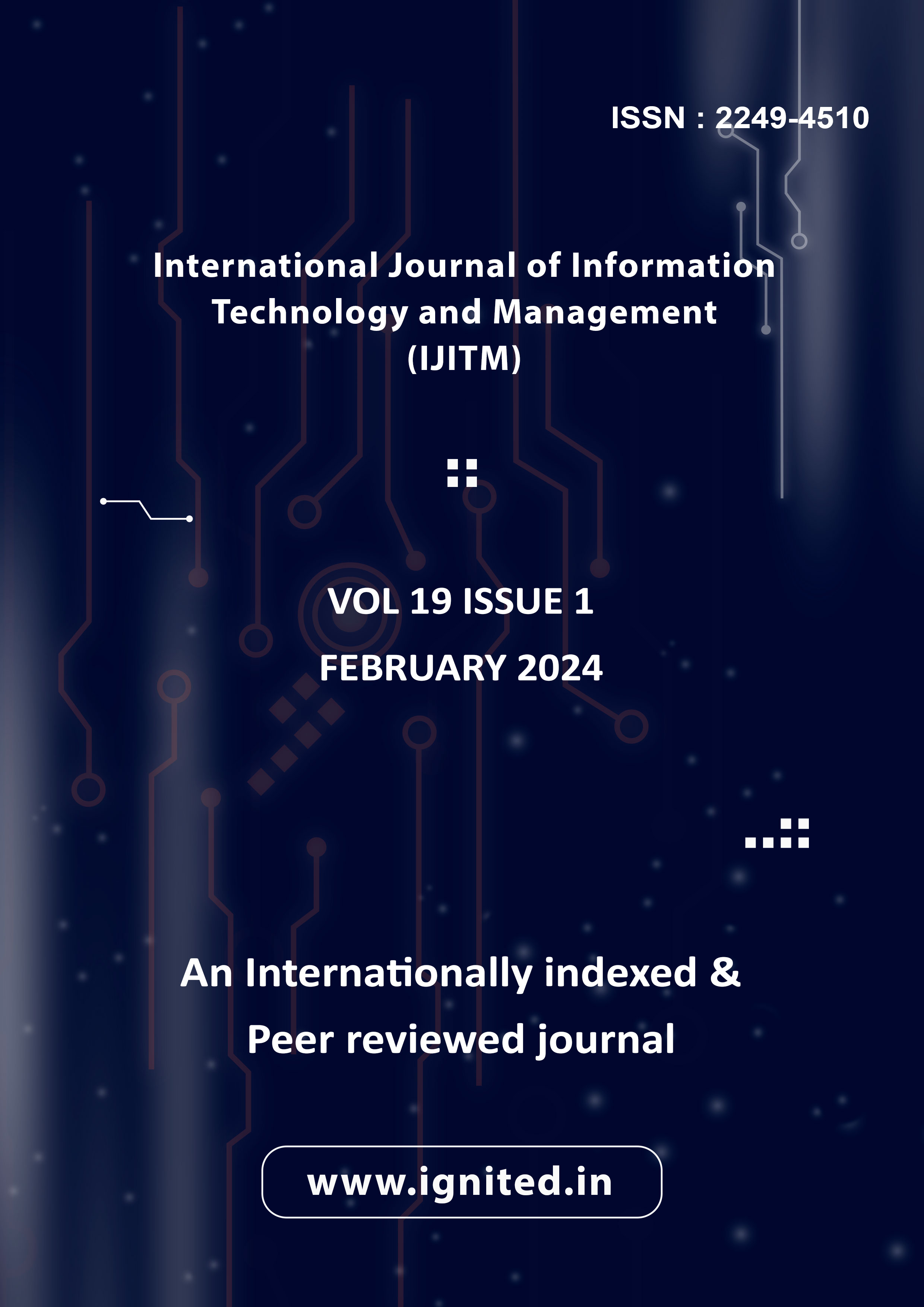Exploring the Impact of HR 4.0 on Organizational Performance
Main Article Content
Authors
Abstract
This study investigates the relationship between the adoption of HR 4.0 technologies and quality hires, focusing on the mediating and moderating effects of skill matching. The hypotheses propose that the adoption of HR 4.0 technologies significantly influences quality hires directly. as well as indirectly through skill matching as a mediating factor and moderating factor. This study explores the significant impact that HR 4.0 technologies have on hiring excellent employees for businesses. This study explains the complex effects of cutting-edge technology tools like automation, machine learning, artificial intelligence (AI), and data analytics on the hiring and selection process through a thorough examination of the literature and empirical evidence. These findings highlight the importance of both the adoption of HR 4.0 technologies and the implementation of effective skill matching strategies in enhancing the quality of hires within organizations. Implications for theory and practice are discussed, along with suggestions for future research.
Downloads
Article Details
Section
References
- Abraham, S. (2012). Development of Employee Engagement Programme on the basis of Employee Satisfaction. Journal of Economic Development, Management, IT, Finance and Marketing, 4(1), 23–37.
- Anwar, G., & Abdullah, N. N. (2021). The impact of Human resource management practice on Organizational performance. International Journal of Engineering, Business and Management, 5(1), 35–47. https://doi.org/10.22161/ijebm.5.1.4
- Bhatti, K. K., & Qureshi, T. M. (2007). Impact of employee participation on job satisfaction, employee commitment and employee productivity. International Review of Business Research Papers, 3(2), 54–68.
- Dutta, D., & Vedak, C. (2023). Determining quality of hire, the holy grail of recruitment: A structuration perspective. Human Resources Management and Services, 5(2), 3373. https://doi.org/10.18282/hrms.v5i2.3373
- Hirshberg, M. J., Flook, L., Enright, R. D., & Davidson, R. J. (2020). Integrating mindfulness and connection practices into preservice teacher education improves classroom practices. Learning and Instruction, 66(January 2019), 101298. https://doi.org/10.1016/j.learninstruc.2019.101298
- Kahn, W. A. (1990). Psychological conditions of personal engagement and disengagement at work. Academy of Management Journal, 33(4), 692–724.
- Kim-Soon, N., & Manikayasagam, G. (2015). Employee engagement and job satisfaction. Retrieved January, 14, 2017.
- Kosti, M. V., Georgiadis, K., Adamos, D. A., Laskaris, N., Spinellis, D., & Angelis, L. (2018). Towards an affordable brain computer interface for the assessment of programmers’ mental workload. International Journal of Human-Computer Studies, 115, 52–66.
- Lermusiaux, Y., & Snell, A. (2005). Paper Quality of Hire. Training, March, 1–8.
- Sabuhari, R., Sudiro, A., Irawanto, D., & Rahayu, M. (2020). The effects of human resource flexibility, employee competency, organizational culture adaptation and job satisfaction on employee performance. Management Science Letters, 10(8), 1775–1786.
- Shamaileh, N. A., Eldahamsheh, M. M., Alneimat, S., Istait-Eyeh, R., Azzam, I. A., & Al-Hawary, S. I. S. (2023). The effects of smart human resources 4.0 on employee job effectiveness: The mediating role of employee job satisfaction. International Journal of Data and Network Science, 7(2), 801–808. https://doi.org/10.5267/j.ijdns.2023.1.009
- Song, G., & Ling, C. (2011). Users’ attitude and strategies in information management with multiple computers. International Journal of Human-Computer Interaction, 27(8), 762–792.
- Tang, G., Chen, Y., Jiang, Y., Paillé, P., & Jia, J. (2018). Green human resource management practices: scale development and validity. Asia Pacific Journal of Human Resources, 56(1), 31–55.
- Van Horn, C. E. (1995). Enhancing the Connection between Higher Education and the Workplace: A Survey of Employers. Education COmmission of the States.
- Vereycken, Y., Ramioul, M., Desiere, S., & Bal, M. (2021). Human resource practices accompanying industry 4.0 in European manufacturing industry. Journal of Manufacturing Technology Management, 32(5), 1016–1036.
- Verma, A., Bansal, M., & Verma, J. (2020). Industry 4.0: Reshaping the future of HR. Strategic Direction, 36(5), 9–11.
- Weller, I., Hymer, C. B., Nyberg, A. J., & Ebert, J. (2019). How matching creates value: Cogs and wheels for human capital resources research. Academy of Management Annals, 13(1), 188–214.
- Youssef, Z. J., & Al-Tamimi, S. A. (2024). the Interactive Effect of Environmental Uncertainty on the Relationship Between Hr 4.0 Costs and Operational Performance. World Economics and Finance Bulletin, 30, 197–210Et.al, S. M. (2021). The Effect of Human Resource Management Practices on Employee Performance. Turkish Journal of Computer and Mathematics Education (TURCOMAT), 12(3), 2900–2911. https://doi.org/10.17762/turcomat.v12i3.1321
- Ijaz Baig, M., & Yadegaridehkordi, E. (2023). Exploring moderating effects of industry 4.0 adoption on sustainable performance of Malaysian manufacturing organizations. Journal of Industrial and Production Engineering, 40(4), 271–286. https://doi.org/10.1080/21681015.2023.2190766
- Saraç, Ş., & Yağlıkara, A. (2018). Relationship between economic freedom and innovation: Panel data analysis. In Globalization, Institutions and Socio-Economic Performance: Macro and Micro Perspectives (Issue October).
- Tortorella, G. L., Anzanello, M. J., Fogliatto, F. S., Antony, J., & Nascimento, D. (2023). Effect of Industry 4.0 technologies adoption on the learning process of workers in a quality inspection operation. International Journal of Production Research, 61(22), 7592–7607. https://doi.org/10.1080/00207543.2022.2153943
- Zhong, Y., & Moon, H. C. (2023). Investigating the Impact of Industry 4.0 Technology through a TOE-Based Innovation Model. Systems, 11(6), 1–21. https://doi.org/10.3390/systems11060277

